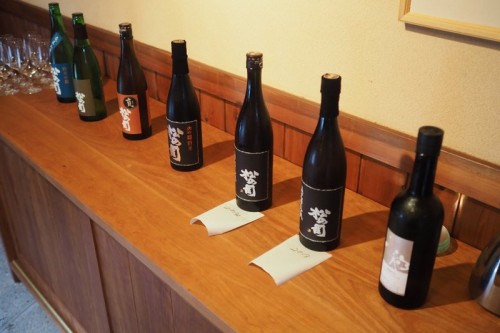
On my recent Japanese trip I had a chance to visit two high-end artisanal sake breweries. It was really interesting, especially coming from a wine background, to see how sake is made.

The sake making process begins with the polishing of rice. The amount of material removed is expressed in a percentage, and generally speaking the lower the polishing rate the more flavour, but at the cost of elegance and refinement (although this is a simplification).
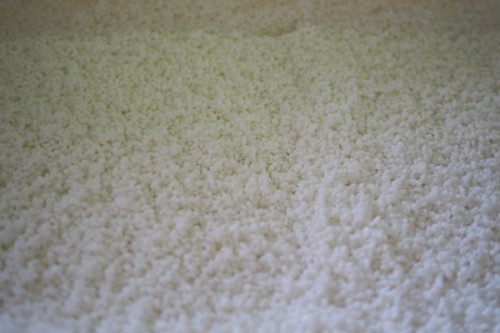
The polished rice is then soaked carefully to absorb just the right amount of water.
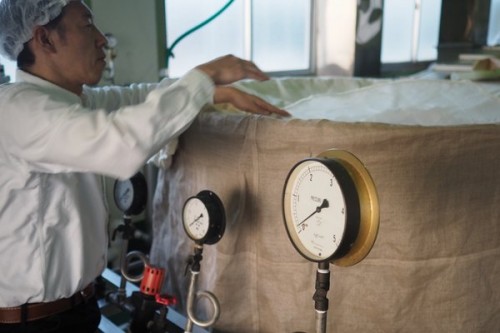
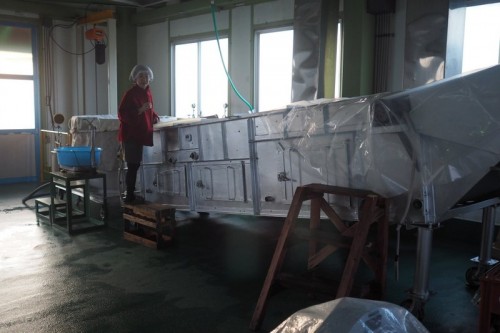
The rice is then steamed and after the steaming process it’s popped onto a complex looking conveyor, which is responsible for cooling the rice down to the right temperature for the next step.
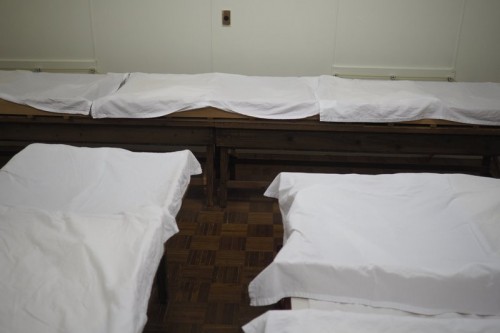
After this, the rice goes to warm room where it is spread out on racks and dusted with fungal spores, known as koji (scientific name Aspergillus oryzae). It’s this fungus that starts a process that converts the starch into sugars. This is a critical stage in the process, and a good sake brewer will be monitoring the rice carefully.
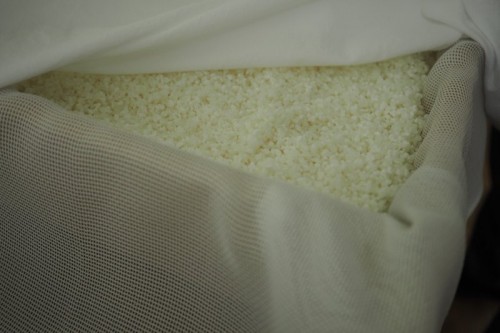

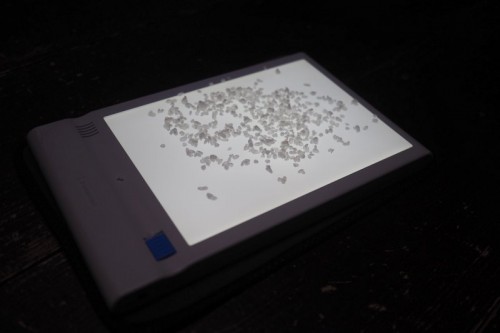
We tasted some of the rice that was undergoing this process, and it was partially sweet. The room is kept in the mid-30s centigrade, and at an appropriate (high) level of humidity.
Then, it’s time for fermentation. This takes place at cool temperatures, and involves sequential addition of yeast, more koji, and rice, and this is followed by pressing. The best sakes aren’t just free run, but contain some pressings, too.
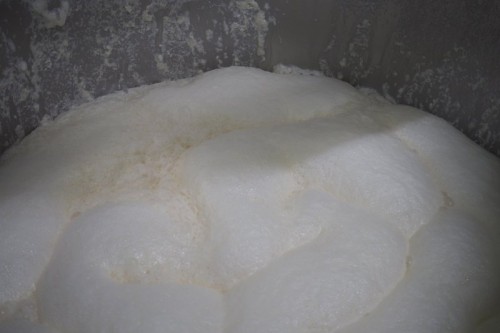
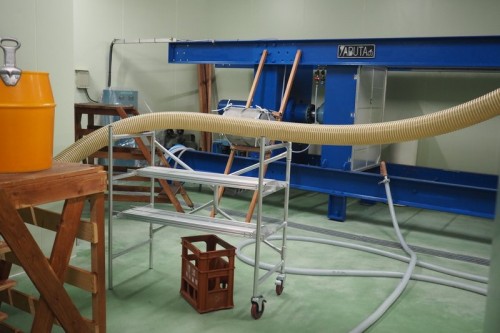
You can see some of this process in action in the following short film, which was shot at both breweries.
MATSUNOTSUKASA SAKE BREWERY
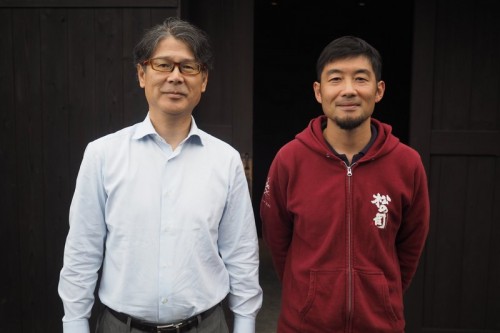
Matsunotsukasa sake brewery is based in the Shiga prefecture, to the east of Kyoto. Close by is Lake Ryuou, and Mount Ryuou, but here the land is flat and suitable for rice production. The region is famous for its omi beef and preserved, stinky sushi.
There are two rice sources: one is close to Kobe and is the sake rice equivalent of a Grand Cru site: it’s triple A graded. Only a handful of producers have the right to farm this plot, which is called Tojo, in Katou City. The soils there consist of very dense, heavy clay and the water is hard.

The second is local to the brewery. The same variety, Yamadanishiki, is grown here but the soils are nutrient poor, the water is softer, and the productivity is lower.
We met with chief brewer Ishida Keizou and the MD Tadayuki Matsuse for a tasting and tour.
I have scored these sakes on a 10-point scale. They were all superb (8 is a high score, and 9 extremely high).
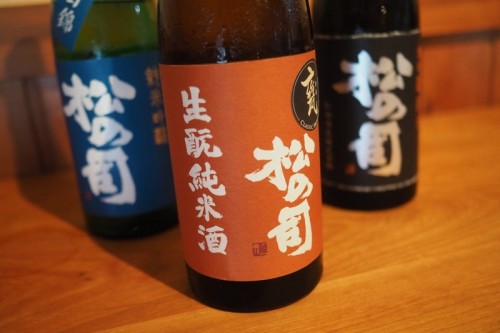
2016 Yamadanishiki, Junmai-ginjo, polishing rate at 50%
Made with soft water. Gentle fermentation and round palate. Lovely complex favours: really bold and rounded with nutty notes and some sweetness. Lovely texture here with apple and pear fruity notes. Really stylish and full flavoured.
2016 Yamadanishiki, junmai, kimoto(ancient method), amphorae, polishing rate at 65%
(Red label) Really complex and full flavoured with a slight cheesy edge to the bold, rich, nutty fruity characters. It’s really rich and smooth with lovely savoury complexity. Has a long, slightly salty finish, with some herbal hints. 8.5
2015 Yamadanishiki, junmai-daiginjo, polishing rate at 35%
(black label) Low polishing rate delivers more flavour. Very elegant aromas: fine, some ripe pear. Really supple and elegant on the palate with refined, smooth texture and subtle nuttiness, with some salty hints. Lots of flavour. Finishes smooth and savoury. 8
2015 Yamadanishiki, junmai-ginjo, azolla (Organic), polishing rate at 50%
(Azolla means water cress in Italian). (Green label) Beautiful elegant aromas of fine ripe pear and green apple. The palate is very open and fruity with lovely smoothness, nice texture and depth, and subtle nutty hints. The finish is really long and smooth. Such refinement and concentration. 9
2014 Yamadanishiki, junmai-daiginjo, azolla black, polishing rate at 35%
(dark blue label) Fruity, refined nose. Some straw, citrus and pear. Really rich and expressive on the palate with lovely fresh fruity characters. Has depth and freshness, and lots of flavour. Some herbal hints, and a long, nutty finish. 8
2013 Yamadanishiki, junmai-daiginjo, azolla black, polishing rate at 35%
Detailed, broad and really interesting with pear, ripe apple and a hint of melon, even. Very stylish and expressive with amazing freshness, focus and purity. A really long, smooth, fruity finish. 9
Yamadanishiki, junmai-daiginjo, Matsu, polishing rate at 30%
A different style with international markets in mind. Bright, aromatic and very fruity on the nose. Very fruity on the palate with pears, melon and even table grapes. Very enticing with a hint of sweetness and some nutty notes on the finish. Lots of flavour here. Slightly salty. Impressive in a different style. 8.5
ENASAN SAKE BREWERY

Enasan is a sake brewery located inland, in Nakatsugawa in the Gifu prefecture. Here there’s a continental climate with hot summers and cold winters, where the temperature dips as low as -10 C.

Nakatsugawa is a bit of a touristic hotspot, on a symbolic road from Tokyo to Kyoto. It is one of the resting places. It is also home to cut flowers, Takamine guitars, Ena violins and Kiso AOP cypress wood. This is also a place famous for traditional sake drinking vessels.
The Enasan brewery dates back to 1820. More recently it merged with the Maruto-Mizutanidi distribution company. Takahumi Sumikawa is the consultant sake maker here; we met with chief sake maker Katsuyuki Iwagama.
Production is 65 000 bottles per year.
80% of the production is from Yamadanishiki rice, but 20% comes from Gohyakumangoku and Hidahomare rice (the latter is a local variety that deals well with cold winter temperatures).
All the production here is junmai-gingo style which is rare

Yamadanishiki, Junmai, 60%
This is a very fruity style with lively apple and pear characters, as well as some nuttiness. There’s some citrus on the finish: mandarin and lemon. This is quite bright and vivid, with real freshness and intensity. Long sweet finish. 7.5
Yamadanishiki, Junmai-Ginjyo, 50%
Delicate, floral nose with some sweetness. The palate is very fresh with bright fruity characters (pear, mandarin) but also a lovely refined nuttiness. Lovely texture with sweetness and saltiness in nice tension. 8
Hidahomare Junmai-Gingyo 50%
Really distinctive: a fresh style with lots of citrus characters, including lemon and tangerine. The flavour builds after it enters your mouth, and it finishes lively, nutty and spicy. Very long, savoury finish. Quite different in style. 8
Yamadanishiki Junmai-Daiginjyo 40%
Refined nutty, waxy aromas. Subtle ripe pear fruit. Lively palate has a rounded texture and some bright citrus peel notes, as well as baked apple and conference pear. Long finish is nutty, sweet and quite bright. Nice harmony here: lots of flavour. 8.5
“Shumikawa” Junmai-Daiginjyo 40% Nakadori
This is very elegant and textural, but also has freshness and lightness. It has a nice balance between fruity (melon, pear) characters and also the slightly spicy nuttiness, and finishes smooth, long and sweet. Nicely fruity in style. Accessible yet serious. 8.5
See also: some excellent sakes from Ueno Gourmet; an amazing sake tasting
1 Comment on Visiting two excellent sake producers
Wow, really interesting post – great to get an up close encounter with this production method as it’s not something you come across every day! The smell must have been wonderful too!